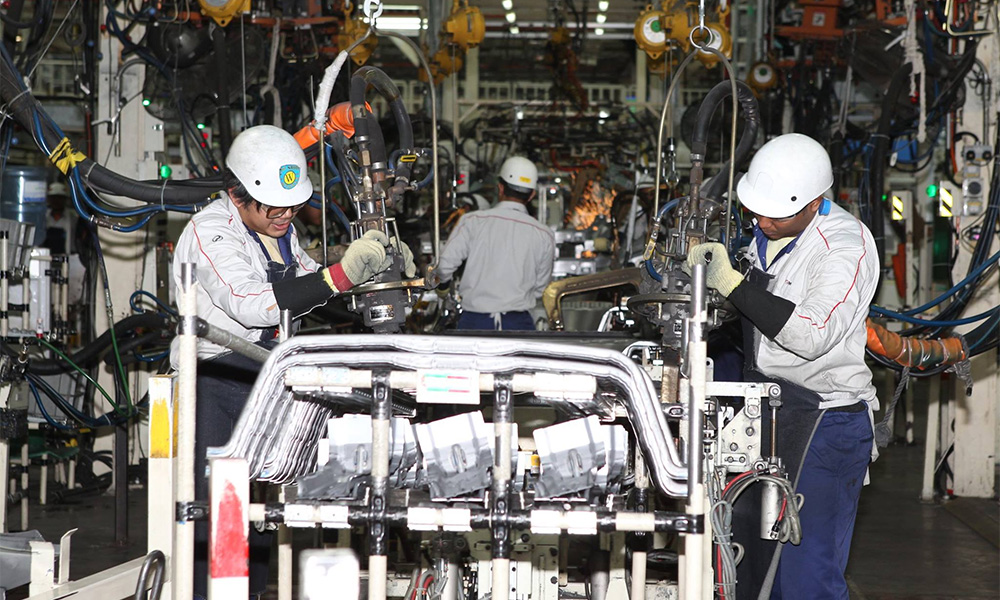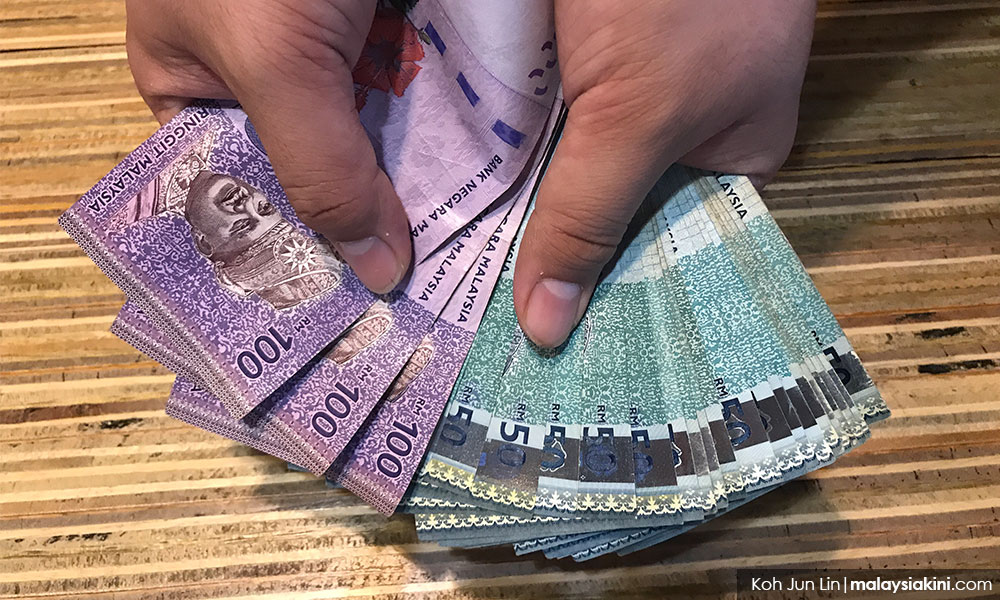MP SPEAKS | Since the topic of foreign direct investments (FDI) has been in the news lately, I thought it would be useful for me to pull back the curtain and share the challenges and opportunities in attracting FDI to Malaysia based on my one-and-a-half years as deputy minister in the Ministry of International Trade and Industry (Miti).
In doing so, I hope to shine the spotlight on what needs to be done in order to continue to make Malaysia an attractive FDI destination in Southeast Asia. It is still not too late to reverse the mistakes made in the one year of the Perikatan Nasional (PN) government and prevent Malaysia from turning into the new "Sick Man of Southeast Asia".
Broadly speaking, FDI inflows (by this I mean, manufacturing and services FDI, not equity FDI) into Malaysia comes in two forms. The first is FDI from already existing multinational corporations (MNCs) which have already invested in Malaysia. This would include the likes of Intel’s longstanding presence in Penang, Shell Business Service Centre in Cyberjaya and Standard Chartered’s Global Business Service Centre in Teknologi Park Malaysia (TPM), Bukit Jalil, just to name a few.
Whether it is manufacturing or services (or manufacturing services), each of these MNCs will have to undertake periodic reviews with their headquarters (HQs) on the business outlook of their Malaysian operations. For some of the centres which are facing financial pressures, it is a constant battle to justify to HQs why their Malaysian business should continue to operate.
For the centres which are doing better, it is also a constant fight with other operation locations of the same company to attract more investment into the Malaysian operations. The second form of FDI is new investments by MNCs without any existing operations in Malaysia.
For these MNCs, their requirements for an investment location, especially for global business services delivery, are the following:
- a stable investment environment which usually means a stable government and hence, policy environment;
- access to the necessary human capital;
- various tax incentives and grants;
- decent quality of life especially for their expatriate workers; and
- for some, access to the local market.
I am not sure as to the exact reasons for the recent announcement of the closure of IBM’s Global Delivery Centre (GDC) in Cyberjaya but I can hazard a guess. For the delivery of IT- related services, Malaysia is always competing with other lower-cost locations like India, the Philippines and increasingly, Vietnam.
At the higher end of IT services (research and development) in areas such as big data and artificial intelligence, it is almost impossible for us to compete with Singapore as their policy environment and direction is miles ahead of us, despite their very high human capital costs.
Our slight advantage in terms of language skills and being a nicer place to live and work compared to Bangalore or Manila can only take us so far, especially when other places are improving rapidly relative to us.

My best guess is that the local team in IBM Malaysia could no longer justify the cost differentials between Malaysia and India coupled with the vastly superior number of IT professionals and technicians which India can provide. The straw which may have broken the camel’s back was the announcement by Senior Minister Ismail Sabri Yaakob, in September last year, that there would be a ban on travel to Malaysia by non-citizens from countries with more than 150,000 Covid-19 cases.
This unexpected and sudden decision caught many in the investor community by surprise and would most certainly have caused some level of unhappiness among the senior management in the HQs of many MNCs which have invested in Malaysia. This ban not only affects the ability of senior management from American, British, German, French and Italian MNCs (just to name a few) from coming to Malaysia but it also stops workers from India from returning to Malaysia post-MCO 1.0, which is especially important in the IT services sector. The continued political instability and haphazard policy direction of the PN government during its first six months in power also would not have helped the situation.
The decision by IBM HQ to shut down its GDC would not have been an easy decision, especially since this GDC was only launched not too long ago in 2014. 2 The Covid-19 crisis would certainly have figured into this decision, but I do think that there were policy steps which the Malaysian government could have taken in order to prevent or at least delay the closure of this GDC.
(If Parliament were in session, we would be able to ask the MITI minister if he did anything to persuade IBM to keep its GDC in Malaysia open but unfortunately, Parliament is still suspended at the time of writing.
(Also, for the record, I have not spoken to anyone in the current IBM Malaysia senior management team on the details of the GDC closure.)
The decision by IBM to close their GDC in Cyberjaya not only impacts the 1,000-plus high skilled workers which they employ (and my thoughts go out to these workers who no doubt will have challenges finding similarly high-paying jobs in other companies in Malaysia). But this decision would have also sent shockwaves to other business service centres in Malaysia, whether they have been operating in Malaysia for some time or they are newly established.
Of course, each company has their own internal key performance indicators (KPIs) and the KPIs IBM uses would be different from the KPIs used by, let’s say, Air Liquide from France or ABB from Europe. But I won’t be surprised if the HQs of some of the MNCs with similar services in Malaysia would be asking tough questions of their Malaysian operations, moving forward.

More seriously, this decision would be a big disincentive for other MNCs thinking of setting up business services operations in Malaysia, including perhaps Amazon and Google. Before moving forward to discuss how we can address the challenges described above, let me look back to highlight some of the steps we took to address the needs of MNCs seeking to invest in Malaysia when Pakatan Harapan was in government.
Firstly, we tried to resolve individual issues that were affecting the financial operations of MNCs operating in Malaysia. Some of these issues may seem trivial but they affect the image of Malaysia as an FDI location in the eyes of foreign investors. For example, there was a US MNC which had trouble issuing credit cards on behalf of their employees because this would be counted as holding “debt” which Bank Negara did not allow them (and other similarly classified companies) to hold.
After initiating discussions with BNM on this matter, it was resolved after a few months, much to my relief. There are other examples but I won’t mention them here. I am not sure if these kinds of industry engagement still take place under this PN government.
Secondly, we tried to address existing gaps in the “software” and “know-how” in attracting FDI. Because of the US-China trade war, we knew that Chinese companies were very interested in diversifying their investment locations including in Southeast Asia. While I value the hard work which my colleagues at Malaysian Investment Development Authority (Mida) undertook to reach out to potential Chinese investors, the truth of the matter is that getting to know Chinese investors is very different from getting to know investors from the US or Europe. Hence, we set up the China Special Channel (CSC) initiative under Investkl, where more China specialists could be recruited to manage investors from China.
Unfortunately, after the change in government, this initiative was taken away from Investkl and put under Mida. I am not sure if this initiative even exists any longer under Mida.
Thirdly, we changed the structure of FDI approval to make it faster and more transparent. Before the change in government in 2018, the approval of FDI-related initiatives was done by the National Committee on Investments (NCI) which was chaired by the Mida CEO and/or chairperson.

Unfortunately, the final approval for the tax incentives still had to go through MITI and Minister of Finance (MOF). This led to long delays in the investment approval decision and may have caused some investors to withdraw their applications to invest in Malaysia. Under the Harapan government, we separated the NCI into two sections – NCI I, which was co-chaired by the Miti minister and the Minister of Finance, was to focus on important strategic investments from large MNCs while NCI II, which was co-chaired by the secretary-general of the Treasury and the secretary-general of Miti (can be delegated to the Mida CEO or chairperson by the Miti minister) was to focus on regular investment incentive applications. Once investment applications were approved at the NCI I level, this application could be fast-tracked through MOF and hence minimise delays. Unfortunately, this structure was abolished when PN came into power.
Moving forward, what can we do to address the challenges described above? A whole “report” can be commissioned to answer this question. Rather than wait for the government to spend millions of ringgit on expensive consultants, I propose the following three simple recommendations:
Firstly, continuously update guidelines and goals in terms of attracting FDIs and implement these guidelines and goals consistently. One of the main reasons why there is confusion among the various government agencies represented at the National Committee on Investments (NCI) such as Bank Negara Malaysia, the Economic Planning Unit (EPU) and the Ministry of Finance is that the guidelines for attracting and approving FDIs have not been updated for some time. This means that the interpretation of a “strategic investment” is often outdated.
There is also added complexity because tax incentives are given for investments in “backward areas”, which means that exceptions such as the threshold of value-added output can be made for investments into rural areas in Sabah, Sarawak and Pahang, for example.
In addition, there may not be clear guidelines for the massive manufacturing investments from China in sectors such as steel, glass and increasingly paper manufacturing. What are the expected KPIs, what is the expected impact on local industries and what are the environmental standards which need to be adhered to? Some of these guidelines cannot be written by Miti alone and would need the cooperation of other ministries and agencies.
Sometimes, guidelines and goals are set in advance but not followed in the implementation. For example, certain MNCs are given conditions such as creating a certain number of high- paying jobs after X number of years. But when some of these MNCs fail to achieve these conditions, no action is taken against them. When this happens, agencies such as the Ministry of Finance and Bank Negara would get frustrated at MIDA and MITI and as a consequence, they make it difficult for reinvestments incentive applications from these companies to be approved. If the conditions set for receiving tax incentives are strictly followed, then the problem of lack of trust on the part of other agencies and ministries will be reduced significantly.

Secondly, there should be some consolidation of the existing Investment Promotion Agencies (IPAs) and they need to be made more responsive (including working with the state-level IPAs). Many comments have been made by various entities including the World Bank that Malaysia has too many investment promotion agencies or IPAs. I concur with this view.
Unfortunately, there wasn’t enough time (and frankly, political will) to do a consolidation exercise for the various IPAs. This exercise needs to be undertaken but it will take a firm and strong hand to guide this exercise since no ministry would want to see the number of agencies under its purview be reduced. For example, the various investment corridor IPAs, such as the East Coast Economic Region (ECER), sit under the Prime Minister’s Department, the Bioeconomy Corporation sits under the Ministry of Agriculture and Food Industries, the Malaysian Digital Economy Corporation (MDEC) sits under the Ministry of Communications and Multimedia and Mida and Investkl sit under Miti.
Having so many IPAs is quite costly to the government from an overhead perspective and can often confuse foreign investors coming to Malaysia.
Ideally, there should only be one IPA (my preference would obviously be for Mida to be the main IPA for Malaysia, given their history and track record) at the federal level and one IPA at the state level (which is the case for all the states which have IPAs at the state level). A case can be made for having one or two more IPAs, given Malaysia’s diversity of FDI options but once you open the door to have more than one, then the pressure to create more IPAs will only grow and grow.
At the same time as this consolidation exercise is taking place, the remaining IPAs have to be streamlined so that they are more responsive to the needs of the marketplace. For example, I found that there was a lack of Chinese-speaking officers in MIDA which puts us at a great disadvantage when it comes to communicating with potential foreign investors from the Chinese market. What would have been a natural advantage for Malaysia, with the larger number of Chinese-speaking graduates in the country, was not taken advantage of by the senior management team in Mida.
Although Mida is seen as the equivalent of the Economic Development Board (EDB) in Singapore, the reality is that the powers enjoyed by the EDB in terms of giving out grants and approving tax incentives far exceed that of Mida. To get close to the kind of effectiveness which EDB enjoys, there needs to be a wholesale change in the capacity as well as capabilities of Mida at all levels of the organisation.

At the same time, the existing IPAs at the federal level must work closely with the state-level IPAs on matters such as land acquisition, zoning and application for electricity and water, just to name a few. Invest Penang and Invest Selangor have led the way in making it easy for foreign investors to invest in these two states. On the whole, I found that the Mida officers were professional in dealing with the state IPAs even though they were from Harapan- controlled states (when Harapan was not in power at the federal level) but the level of responsiveness could be significantly improved.
Thirdly, the benefits of FDI must be shown clearly to the man on the street. One of the main challenges when it comes to discussing FDI in the public sphere is that the benefits of all these FDI inflows have not been made apparent to the man on the street. Often, the impression is that FDI inflows have benefitted those in the T20 via high-paying jobs and investments.
But I have seen the positive spill-over effects of high-quality FDI in Malaysia in many forms such as spinoffs into various companies (HP in Penang into Agilent and Keysight Technologies, for example), increase in income tax payments from high-paying jobs in business service centres (Standard Chartered’s two business service centres in KL), jobs to many in the B40 community and also the CSR outreach programmes conducted by almost all of these MNCs at the local levels. This narrative is not emphasised enough, especially in a holistic way. If the benefits are clear to the man on the street, then it would make it harder for the various government agencies and non-Miti ITI ministries to reject incentives for high-quality FDI applications.
These recommendations are not meant to be comprehensive. Instead, they are meant to highlight the serious underlying structural problems in the system vis-à-vis attracting FDI into Malaysia. And I haven’t even discussed the issue of human capital. It is far too easy to criticise the PN government for not doing anything to stop the FDI outflows from Malaysia in the one year it has been in power. It takes much more effort and thought to propose credible short- and long-term policies to reverse this trend and prevent Malaysia from turning into the “sick man of Southeast Asia”. - Mkini
ONG KIAN MING is Bangi MP and assistant political education director of the DAP.
The views expressed here are those of the author/contributor and do not necessarily represent the views of MMKtT.



No comments:
Post a Comment
Note: Only a member of this blog may post a comment.